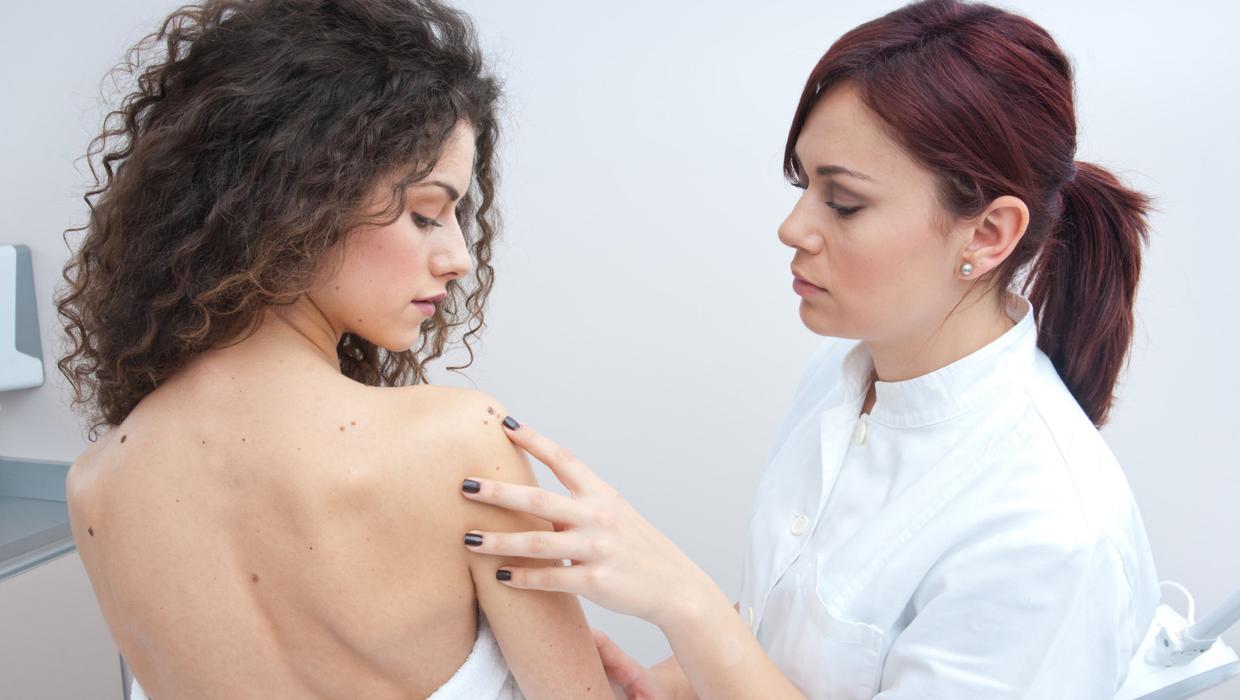
Q I have had moles since I was a child and I often notice new ones after the summer. They generally all look the same – reddish, as I have pale skin. However, I notice a new one on my neck that is flesh coloured. I don’t want to bother my GP given the circumstances but I would like to get it checked out. Is it okay to wait until the restrictions are lifted? Would it be possible to go straight to a dermatologist and bypass the GP?
A Sometimes new-pigmented lesions appear on the skin in patients over 30 years old, particularly in Celtic fair-skinned people and it does not necessarily mean they are cancerous. In fact, it is normal to develop a new naevus (mole) up until 40 years old. Thereafter, you need to be more suspicious of a possible skin cancer. Of course, it is important to keep an eye on all moles, old or new, looking for changes over time. People who have over 50 moles, are best advised to attend a dermatologist for regular professional skin reviews. If you are over 30 years old, this new ‘flesh coloured’ skin lesion on your neck could very well be a seborrhoeic keratosis (SK), particularly if your parents or older siblings have also a history of these benign skin lesions. SK is a very common sign of skin ageing and occur in approximately 90pc of people over 60 years old.
If you had episodes of severe sun burn/sun stroke or used tanning beds then you have a higher risk of melanoma. Likewise, if you have a family history or personal history of any type of skin cancer, then you are also at higher risk.
Anybody who has concerns about a change in an existing mole or new pigmented lesion should get it checked out by a GP, as soon as possible. GPs can assess your overall risk of melanoma as well as other skin cancers. Melanoma is rare, with about 1,000 cases diagnosed per year in Ireland. It is more common in the older population but can occur at any age. It’s extremely rare in children. Most cases arise from a new mole. A significant minority of melanoma have little or no pigment (colour) and may appear pale or flesh coloured, making diagnosis even more difficult.
The main reason why consultant dermatologists require a referral letter from a GP is because they will typically know what is benign and what is suspicious (ie they will know when there is a need to refer a patient). If a GP feels a skin lesion is possibly a melanoma they will also be able to advocate on your behalf to get you seen, ideally within 1-2 weeks, by a consultant dermatologist.
Lastly, I mentioned above, the need to watch out for changes in a mole. An increase in size above 7mm, a change in the border, or symmetry, or new variation in pigment within the mole are all potential major signs of melanoma. Minor signs include new onset pain in the mole, or itch, bleeding or crusting over the mole. The ‘ugly duckling sign’ has been added and means that if one of your moles stands out from the others, then you should get it assessed. Let’s face it, if there is a good reason to have the skin lesion biopsied or excised, the best form of reassurance is a pathology report confirming the benign diagnosis.
Dr Jennifer Grant is a GP with Beacon HealthCheck
Health & Living
